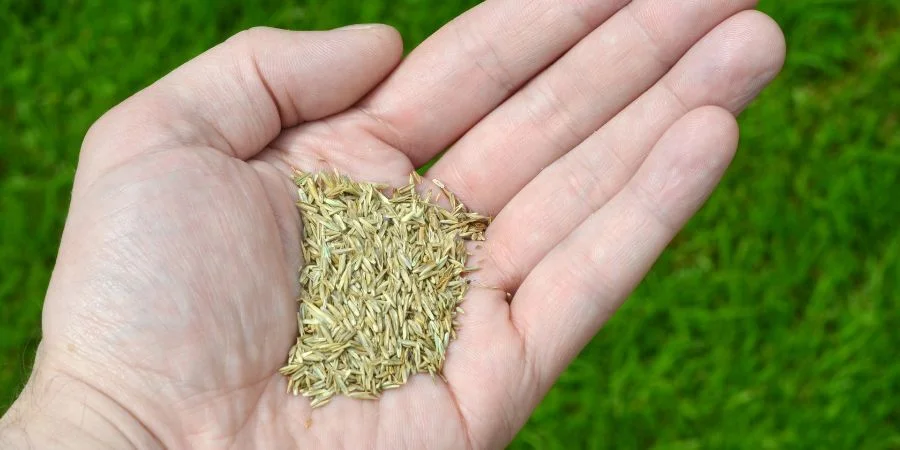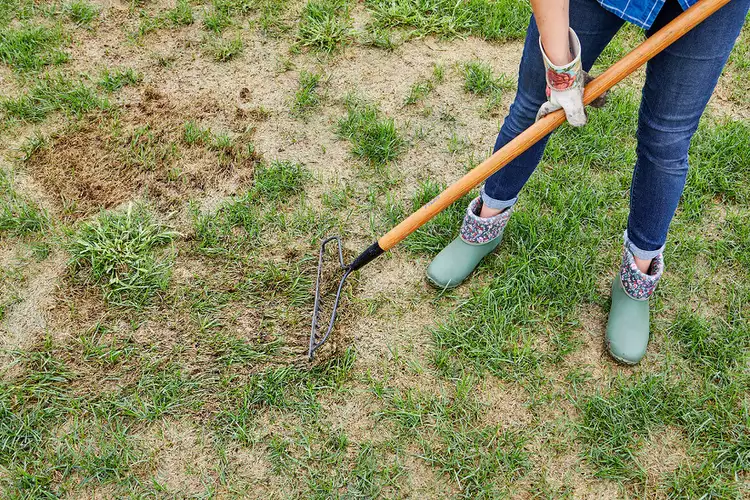Guide to a Perfect Lawn
Last Updated on March 25, 2025 by Duncan
In most gardens, the lawn takes center stage. When your grass looks look, your entire garden looks good. Unfortunately, good looks don’t just happen—you must work for them. To help you out, here are a few tips that will help you get the perfect lawn.
Cut the grass properly.
To cut the grass properly, follow a set of steps.
Step 1: Inspect the lawn
Before mowing, go around the lawn and collect any loose pebbles or small sticks. Without doing so, debris may strike your mower blades, causing damage to the lawn mower and injury if the materials are propelled back out.
You also should inspect the condition of the grass. If the grass is wet, consider waiting until it dries out.
Step 2: Protect yourself
To avoid cutting through the cable of a corded mower, place it over your shoulder. Always connect it to an RCD (residual current device) to avoid electrocution.
Sandals and flip-flops do not provide adequate protection. To protect your feet, wear steel-toe boots that will safeguard your toes from major harm. You should also wear eye protection, ear protection, and robust gardening gloves in case stones fly up.
Step 3: Begin by cutting around the edges of the lawn
Begin by mowing around the edge of your grass, taking care not to snag any plants at the side of your garden. This is because you get to judge the quality of the cut and adjust it accordingly. The beauty is that most people ignore the edges, so you can get away with making a crooked cut.
As you mow, avoid standing on the edge of your lawn (where the grass meets your flowerbed) since this might damage the edge.
Step 4: Continue with the mowing
Move your lawn mower up and down the whole length of your grass, overlapping the previous strip each time to ensure no spots are missed.
Remember to regularly empty the collecting box to avoid clusters of clippings on your lawn.
Step 5: Make final touches
Once you are done, step back and look at your lawn. Do you like how it looks? If there is anything you can do to improve the looks, do it. For example, you can clip the edges of your lawn using shears or a grass trimmer for that snappier appeal.
What is the best height to mow your lawn?
The ideal height for mowing your lawn will vary based on the year’s seasons. In winter, the ideal height is 25mm.
The best way to do it is to set the blades high at the start of the mowing season in spring, then progressively decrease them over the weeks until you achieve the main cutting height of 25mm.
You should avoid cutting below this height as it can result in a weakened lawn that is more sensitive to dryness and other problems.
In the summer, you can trim as low as 12mm for luxury lawns that are rarely utilized.
Thankfully, a lever can easily adjust most mowers’ blade height. You need to add or remove spacers for certain hover mowers, which is a little more complicated.
How do you get stripes on your lawn?
You’ll need a lawn mower with a roller to get stripes when you mow. The rollers will crush the grass flat after the mower cuts it, giving you the interesting look you are after.
To get the different lawn striping patterns, mow up and down the lawn while cutting stripes. You should note that the stripes result from the light reflected from the grass blades.
The grass facing you appears black, whereas the grass facing away from you appears light.
For the best-looking stripes, cut a little higher because longer grass produces the best look since the blades bend more than shorter grass.
You also should use heavier mowers as they provide the best stripes.
Can you cut wet grass?
It’s unwise to cut wet grass.
Wet grass is slippery and difficult to cut uniformly, resulting in an uneven-looking lawn. It also clumps together and can block the mower deck, reducing performance and potentially causing the mower to stall.
When the ground is moist, the soil becomes softer, and the grassroots are more likely to get torn or yanked out of the ground rather than being cleanly cut.
Your ideal lawn is puckered with bald patches, is it? So let the grass dry before shaping it into the idyllic pasture it deserves to be.
If you must mow wet grass, wipe the mower deck periodically to avoid clumping, and mow slowly to allow the blades to cut more evenly.
While you can get away with wet grass, you shouldn’t mow a frosty lawn. This is because it can easily harm both your mower and the grass.
Also see: Will mowing wet grass ruin my lawn mower?
What should you do with the grass clippings?
Some mowers have a mulching function that chops up clippings and puts them back into the lawn, eliminating the need for you to pick them up.
Most lawnmowers contain a collection bag or box that collects clippings while you mow. Many contain an indication to show how filled the bag is and whether it needs to be emptied.
You can put grass clippings in your green-waste collection bag, but if you applied weedkiller on the lawn, you need to cut it several times before putting it in the compost bin.
Grass cuttings can also be composted. It’s ideal for adding deciduous tree leaves (one part leaves to one-part grass clippings) or dirt in the same ratio. Both methods absorb liquid from grass clippings and keep them from becoming sticky.
If you would love to compost your grass clipping, here is a guide on how to go about it:
Lawn care tips
You must take good care of the cut grass to look its best. To help you out, here is a guide on taking care of your lawn in different seasons.
Spring and summer lawn care
Most people use their lawns in the summer, so you should take good care of your grass to ensure it’s in great shape.
Some of the things you need to do include:
Feed the grass – the key to greener grass is to feed it.
Get rid of the weeds: Unless you enjoy particular weeds, such as daisies, kill lawn weeds. If this is the case, carefully spray with a lawn spot weed killer or dig out the weeds with a daisy grubber. Low-growing, spreading weeds like clover can be tough to eradicate. Rake them before you mow to lift their stems; this will weaken the plants over time.
Remove moss: Moss is commonly caused by shadows from nearby plants and trees, so attempt to eliminate this as much as possible by thinning its growth. Feeding the lawn and spiking the surface with a garden fork to reduce compaction should also assist.
Repair bumps and hollows by cutting an H-shape in the grass and peeling back the turf to create two flaps. Then, either add or remove soil to level it. Reinstall the turf, firm it up, and keep it properly watered.
Reduce grass compaction: Inadequate drainage and a buildup of rainwater beneath the surface cause grass roots to struggle for oxygen and the grass to die. Reintroduce air into the soil by inserting a garden fork every 20cm.
Repair bare patches in the lawn by removing the cause of wear, filling the patches with a shop kit or raking the area yourself, sowing grass seed, and covering it with compost or soil.
Taking care of your lawn in autumn
Some of the things you need to do to keep your lawn in top shape in autumn include:
Kill moss by applying a moss killer, removing sources of shade, and relieving lawn compaction.
Rake or scarify the turf to open it up and allow the new grass plants to grow with less competition.
Oversow – putting grass seeds onto existing turf will help thicken it and keep weeds at bay.
Top dressing will aid in the improvement of soil quality. Combine three parts sharp sand and one part purchased compost. Apply 2kg per square meter and brush into the turf. For the next two or three weeks, avoid mowing the lawn.
Water and feed as needed, but don’t soak the lawn. You can also apply an autumn feed to help the turf recover before winter.
Winter lawn care
It’s best to leave the grass alone throughout the winter. However, there are several things you can do to keep your grass in good condition. These things include:
Mow as needed. When the turf isn’t wet or icy, mow the lawn as needed.
Fungal illnesses should be avoided because fungal spores live in the soil, producing turf diseases when damp and humid. Brushing off morning dew from the lawn is an effective preventative measure.
Walking on cold grass might destroy it. The same applies to extremely wet weather, so avoid going on your lawn during winter.


